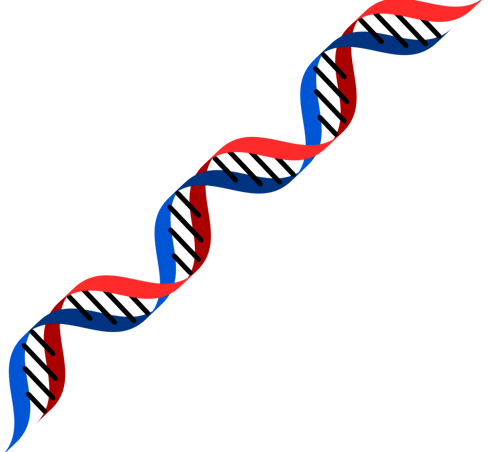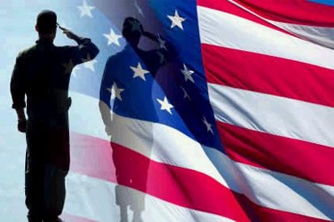DNA
DNA testing has significantly improved the chances of finding GI Fathers (or Grandfathers) especially when there is no name or military information to work with.
It is also extremely valuable in proving the family connection beyond any doubt, even when a name or other information is available.


So Why DNA Test?
For people who have unknown parentage, autosomal DNA testing is an invaluable tool. When used effectively alongside other documentary evidence, it can determine who your close relatives are, including previously unknown parentage. Many people have discovered who an unknown parent is and connected to close family using Autosomal DNA-related information.


How Autosomal DNA Testing Works
The term Autosomal DNA describes DNA which is inherited from the autosomal chromosomes. Humans have 22 pairs of autosomes and one pair of sex chromosomes (females xx, males xy).
When you test with a company, your DNA is compared to all the other people in that company’s database. The algorithm is looking to see if you share segments of DNA across the 22 pairs of autosomes with others who have also tested with that company. It then produces a match list, tells you how much DNA you share with each match and across how many segments it is shared. It will also predict approximate likely relationship based on the amount of DNA shared.
The unit used to indicate the amount of matching DNA shared between matches is the centimorgan (cM). The number of cMs shared with a match tells you what the likely relationship between you and the match is.
The larger the number of cM in common, the closer the relationship and the more likely the match is to be of significance and to be indicative of a shared common ancestor within a genealogical timeframe. That is, within a period in which it is possible to find genealogical records relating to individual ancestors enabling the construction of a family tree.


How do I go about getting a DNA test?
There are now a number of reputable companies offering DNA tests, including:
• Ancestry
• My Heritage
• Family Tree DNA (FTDNA)
• 23andMe
Each of these companies offers something slightly different to the others in terms of DNA match interface and tools for analysis. Each has its pros and cons. Overall none is necessarily better or worse than the others – all are potentially useful depending where your relatives might have tested.
You can’t know in advance where your relatives have tested, so the more databases your DNA is on, the better. Working across multiple databases can be powerful.
At the same time, it is not a bad idea to start with one database and familiarise yourself with that first. You may find what you are looking for there.
There is no way of knowing which company your American relatives might have chosen, but for people looking to find American relatives, probably the best starting point is Ancestry.


So why test with Ancestry?
According to Ancestry, it has over 25 million DNA results, 100 million family trees and 40 billion records, which makes it by far, the largest public database.
Once you have tested with Ancestry, you can upload your DNA data onto other testing sites to see more matches at no further charge.
Uniquely, Ancestry offers a system which lets you invite other people to see your DNA results and work on your tree without having to share any passwords or login details. This means that you can invite a researcher to securely access the data on your Ancestry account (and you can remove their access at any point, should you wish to do so).
In the UK, the standard price of a kit is £79, plus shipping. However, Ancestry regularly have special promotions and prices are often reduced to £59 or occasionally as low as £49.
The shipping charges cover delivery of the kit to you, and the return postage to Ancestry's labs in America. If you need a replacement kit, there are no additional shipping charges.
Once your results are available following DNA-testing you will be able access basic DNA-related information such as your ethnicity results, DNA matches, shared matches etc.
However, without an Ancestry subscription, you will have a limited view of matches' trees, shared names, locations, and other information such as that provided by the Thrulines feature.
If you decide you want access to a wider range of information, you have 2 broad options:
*An AncestryDNA Plus subscription. This is a lower priced subscription that gives full access to premium DNA inheritance tools and new DNA features as they become available, but it does not include access to paid records or family trees
*One of the other subscription packages that enable access to Ancestry's wider record collections, other users' family trees as well as to the full range of DNA-related tools and information".


How do I upload my AncestryDNA results to other sites?
Fortunately, you don’t need to pay for a test with every company. Once you have your AncestryDNA results, you can use your Ancestry data to find matches on some of the other sites free of charge (the companies do offer extra features for a fee, but viewing matches is free).
What you will need to do is...
1. Download your DNA data from Ancestry
2. Create accounts on the sites that allow free uploads and read through their T&Cs and privacy options
3. Upload your Ancestry DNA file to each of these sites
4. Wait for your data to be processed, which can take a few days, then review your list of matches for new relatives
Unfortunately, you cannot upload your Ancestry DNA data to 23andMe - if you still need more matches to help your search, you would need to purchase a DNA test from 23andMe.
GEDMatch is not a testing company, but a site where people can upload their DNA results if they wish, find matches and use analysis tools.


Reverse Genealogy
The information from Autosomal DNA testing can be used, in conjunction with available documentary evidence, in a process sometimes referred to as reverse genealogy.
When building a family tree, people who know their parentage usually start from themselves and work backwards. However, reverse genealogy identifies the ancestors you share in common with your DNA matches and then works forwards from the ancestors to figure out where you fit. The shared match information provided by the DNA testing company is key to this.
The process is really all about looking for patterns in your match data. It entails clustering matches into groups using shared matching to figure out which group of matches are likely to be relatives of your GI father/grandfather.
Information from DNA matches and available documentary evidence can then be used to triangulate match information and connect groups of matches together around common ancestors in a research tree. The goal is to figure out what ancestors you share with your matches and build down and across to figure out where you fit in that tree.


Help Is At Hand...
It is easy to feel a little bamboozled when you first get your DNA information and begin to work with it. However, with practice, it does gradually start to make sense. The more you work with the information the more sense it will make. For help and advice, why not subscribe to the GI TRACE Forum


